My Autistic Awakening
My Autistic Awakening
Unlocking the Potential for a Life
Well Lived
Rachael Lee Harris
ROWMAN & LITTLEFIELD
Lanham Boulder New York London
Published by Rowman & Littlefield
A wholly owned subsidiary of The Rowman & Littlefield Publishing Group, Inc.
4501 Forbes Boulevard, Suite 200, Lanham, Maryland 20706
www.rowman.com
Unit A, Whitacre Mews, 26-34 Stannary Street, London SE11 4AB
Copyright 2015 by Rowman & Littlefield
All rights reserved. No part of this book may be reproduced in any form or by any electronic or mechanical means, including information storage and retrieval systems, without written permission from the publisher, except by a reviewer who may quote passages in a review.
British Library Cataloguing in Publication Information Available
Library of Congress Cataloging-in-Publication Data
Harris, Rachael Lee, 1969
My autistic awakening : unlocking the potential for a life well lived / Rachael Lee Harris ; foreword by Tony Attwood.
pages cm.
Includes bibliographical references and index.
ISBN 978-1-4422-4449-8 (cloth : alk. paper) ISBN 978-1-4422-4450-4 (electronic)
1. Harris, Rachael Lee, 1969 2. Autistic peopleUnited StatesBiography. 3. PsychotherapistsUnited StatesBiography. 4. Children with autism spectrum disorders. I. Title.
RC553.A88H365 2015
616.85'88320092dc23
[B]
2014043149
 TM The paper used in this publication meets the minimum requirements of American National Standard for Information Sciences Permanence of Paper for Printed Library Materials, ANSI/NISO Z39.48-1992.
TM The paper used in this publication meets the minimum requirements of American National Standard for Information Sciences Permanence of Paper for Printed Library Materials, ANSI/NISO Z39.48-1992.
Printed in the United States of America
For my mother Gabrielle Harris, my first mentor and abiding inspiration. With a daughters love and thanks.
Acknowledgments
My heartfelt thanks and gratitude to my husband Rudi, who urged me to share my story, for his unstinting support and encouragement during the writing of this book, and for his graciously allowing his new wife to give out to the public at large a history which had only recently been offered to him.
Thanks to my mother Gabrielle, who willingly and patiently spent more hours than she and I care to remember typing my handwritten manuscript into a neat and decipherable document. The best secretary a daughter could wish for: sixty words per minuteand counting!
Many thanks to my darling sister Sarah, for running her eagle eye over my storyof which she is so much a partin the pursuit of proofreading perfection.
To Professor Tony Attwood, my friend and colleague, for whom I have the greatest respect, and who kindly offered to write the foreword to this book, your belief in me, and encouragement in my professional work, continues to be a source of strength and inspiration. Thank you, Tony.
With grateful thanks to the Sisters of Quidenham Carmel, in whose company my education, both intellectually and spiritually, wasa veritable finishing school for my soul.
And to all my brothers and sisters in the Autism Community: it is a remarkable journey we share. May you always catch sight of the beauty in the twists and turns of your life.
Foreword
Rachaels autobiography can be appreciated and enjoyed on two levels. She has an amazing story to tell, and she is a talented writer. The scenes and experiences are described so richly and eloquently. As each chapter closes, the reader will be eager to find out what happens next. She is a brave and determined woman, and she describes aspects of her life, such as living in a Carmelite monastery, that are fascinating and uplifting. This book will be thoroughly enjoyed by someone who has no understanding of autism but who appreciates a well-written and absorbing true story.
The second level is Rachaels description of the world through the eyes, thoughts and feelings of someone who has Aspergers syndrome, an expression of autism. There are many autobiographies written by women who have Aspergers syndrome, so why is this one different? Rachaels autobiography is unique in that she describes a spiritual journey, and she has become a qualified psychotherapist. Some would not believe that a person who has Aspergers syndrome could be a successful psychotherapist, but I have known Rachael for several years, and frequently, and with confidence, I refer my clients to her. She has an intuitive insight into autism spectrum conditions and compassion for the experiences of her clients. As much as she has been able to unlock the potential of her own autistic characteristics, she is now able to unlock the potential of her clients. She is my hero and a valued and appreciated colleague.
Tony Attwood, September 2, 2014
Introduction
In 2007 I was diagnosed with Aspergers syndrome, a type of high functioning autism. In the years since I was diagnosed, and in particular since my becoming a psychotherapist specializing in helping others on the autism spectrum, many people have asked me how it is that I have managed so well. Reflecting on the question Why? led me to writing not a case study but a life in the hope that in this lifes telling, an explanation might come to light.
The story of Aspergers syndrome, too, begins with a life. Hans Asperger was born on the family farm just outside Vienna in 1906. He was an intelligent but lonely boy, described variously as remote and aloof, who found it difficult to make friends. He went on to excel academically in the field of medicine, going on to study and work at the University of Vienna and specializing in pediatrics.
In his rooms in the University Childrens Hospital in Vienna, he began to identify a consistent pattern of traits and behaviors in a group of about twenty boys who had, over time, been referred to his clinic. The pattern included little ability to form friendships, sensory sensitivity, fine and gross motor problems, difficulties in emotional regulation, problems with organizational skills, and a seeming lack of empathy. Indeed, Hans Aspergers uncanny ability to spot the consistent pattern present in the development and personality type of this relatively minor number of boys lay in no small part in his own recognition of the same traits within himself as a child: a realization of a personality type with which he freely identified.
It was to Hans Aspergers great satisfaction that he also noted that these same children had an inexhaustible ability to talk about their favorite subjects in great detail, subjects he termed special interests. These were his little professors who, according to their abilities, went on to careers in fields as diverse as science and the arts. Some fifty years after Asperger published his landmark paper describing Autistic Psychopathy, his work was finally recognized. In 1994, the condition received his name, Aspergers syndrome, in honor of his work.
My story of living the autistic experience is not, although a large aspect of my life, the whole of my life. This statement should not be revolutionary, but it is made so by examples of Asperger literature, whose unrelenting focus on extremes of behavior and attitude expressed in the content paint a picture of high functioning autism so severe that the reader cannot relate to its contents: rollicking roller-coasters of mayhem, to which I personally have a hard time relating. This is a book that happily bucks the trend.
My Asperger life, as with all individual lives, can never be viewed in isolation; it can only be viewed through the prism of environment, upbringing, temperament, life experience, and personal values
Next page
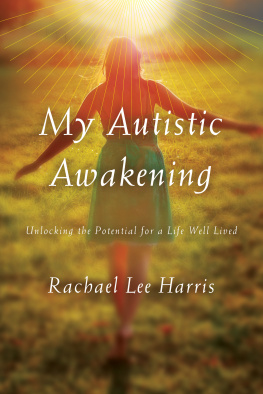

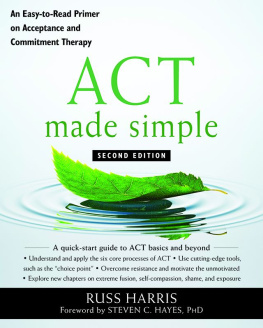
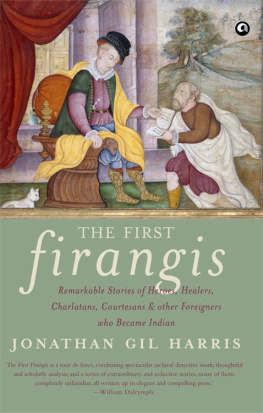
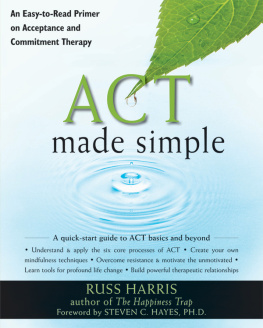
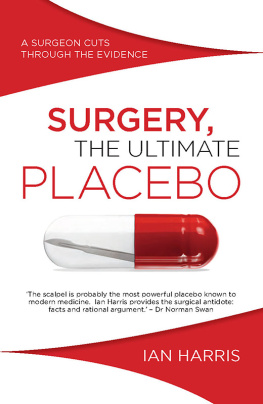
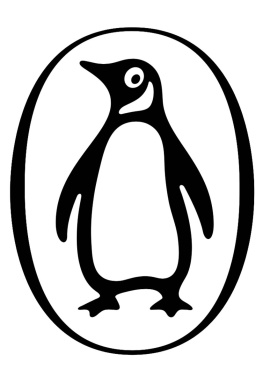
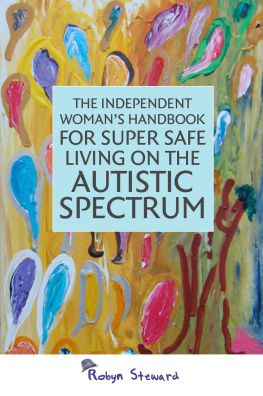
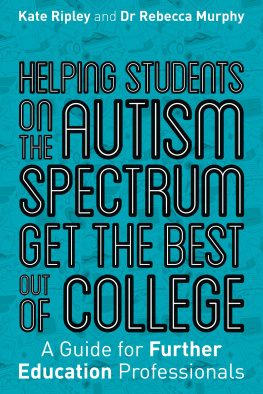




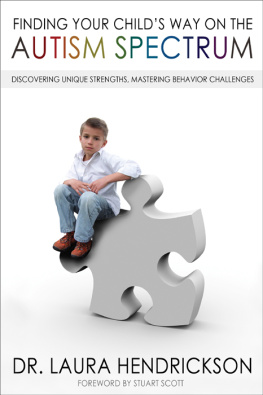
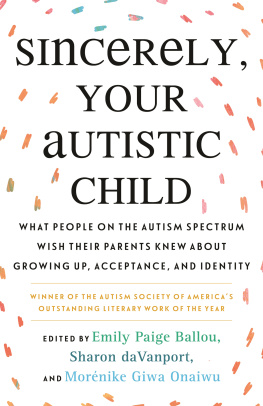
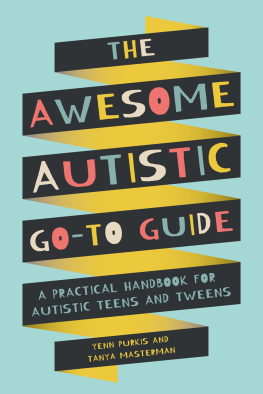
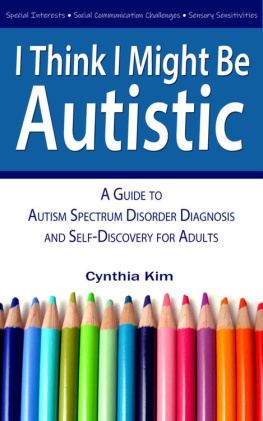
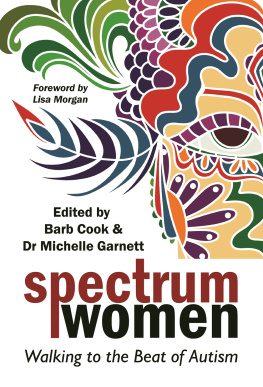
 TM The paper used in this publication meets the minimum requirements of American National Standard for Information Sciences Permanence of Paper for Printed Library Materials, ANSI/NISO Z39.48-1992.
TM The paper used in this publication meets the minimum requirements of American National Standard for Information Sciences Permanence of Paper for Printed Library Materials, ANSI/NISO Z39.48-1992.